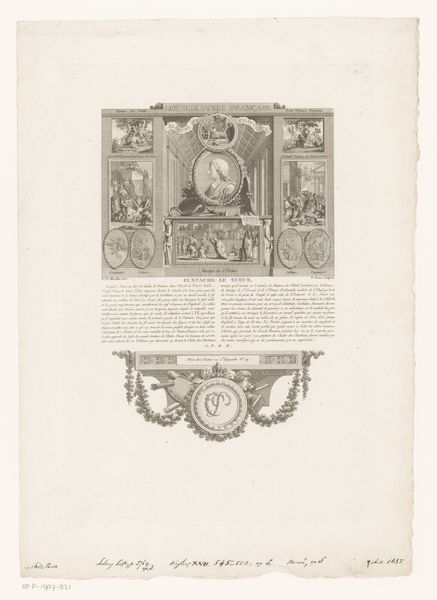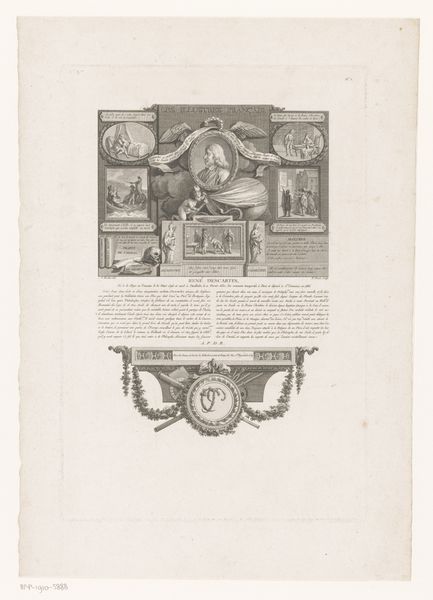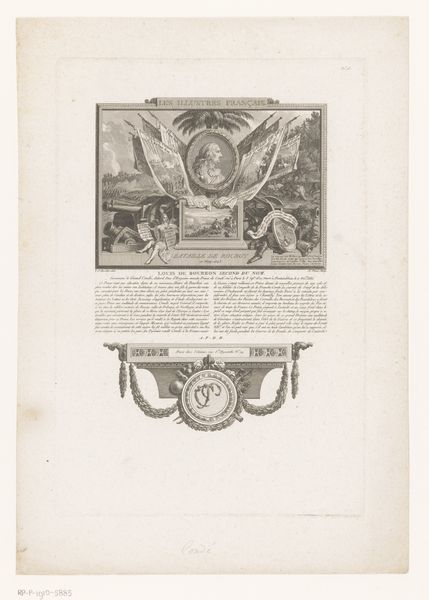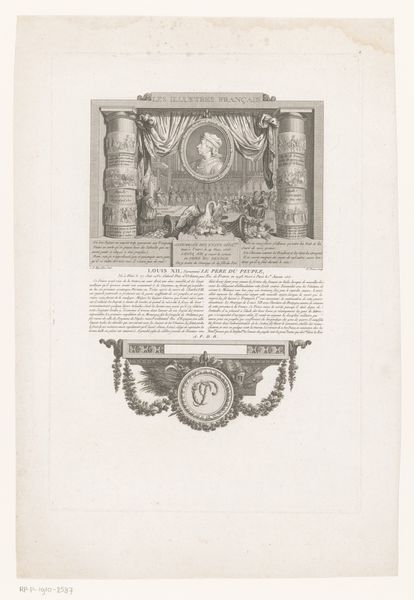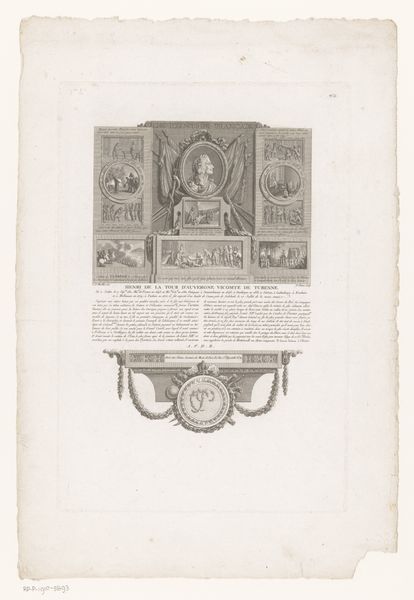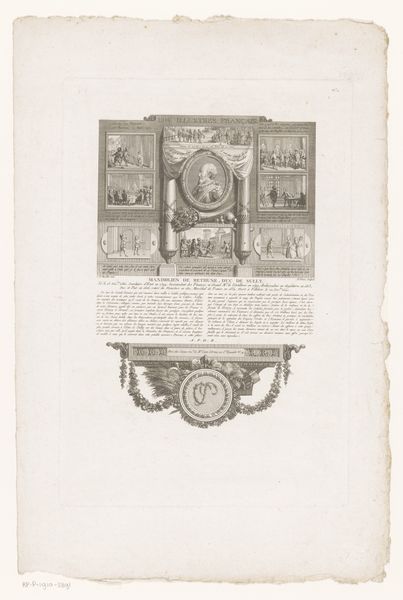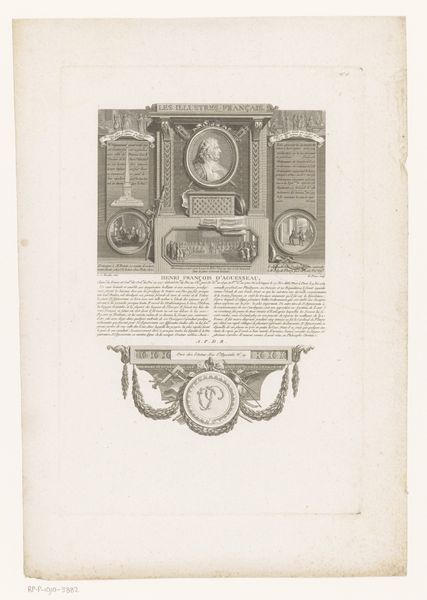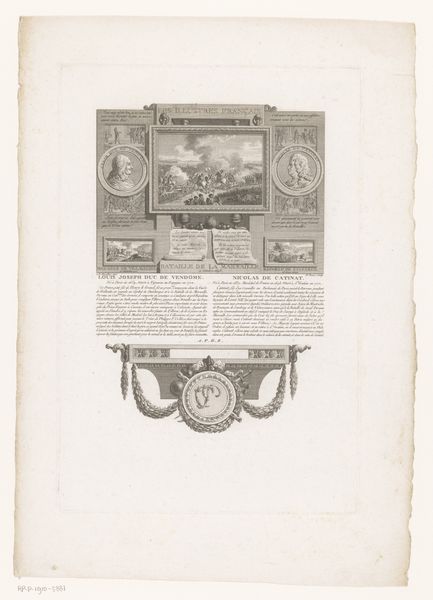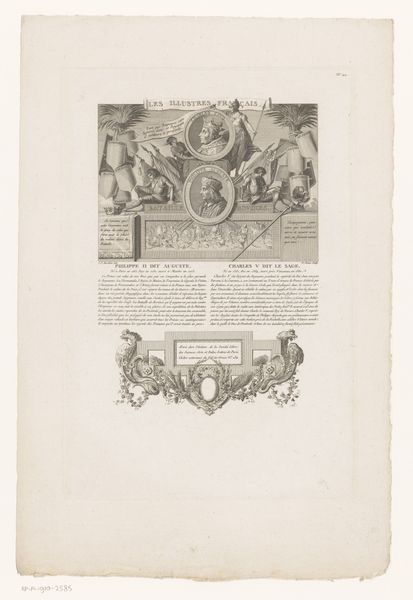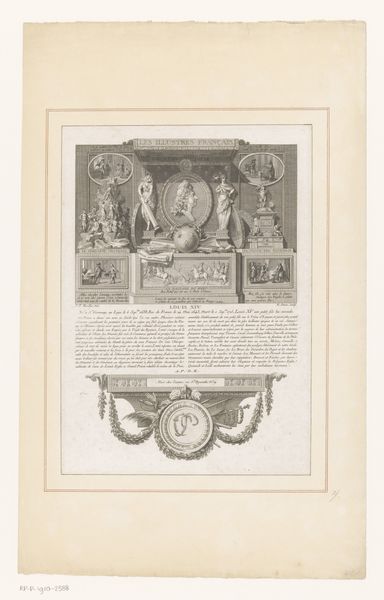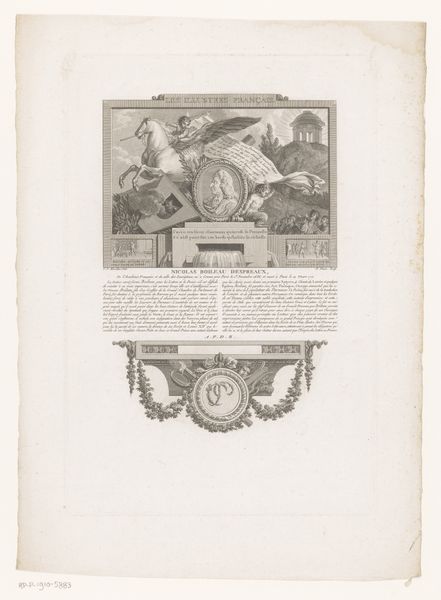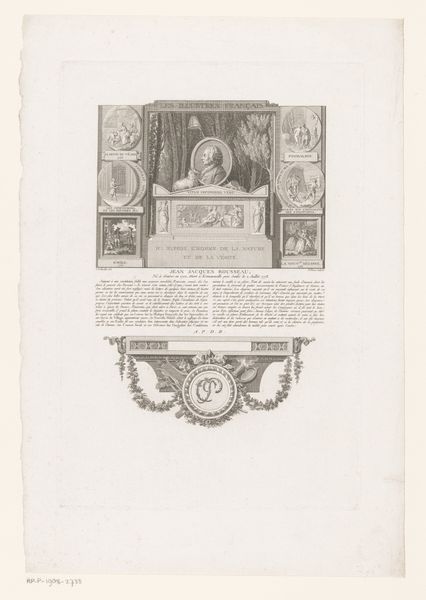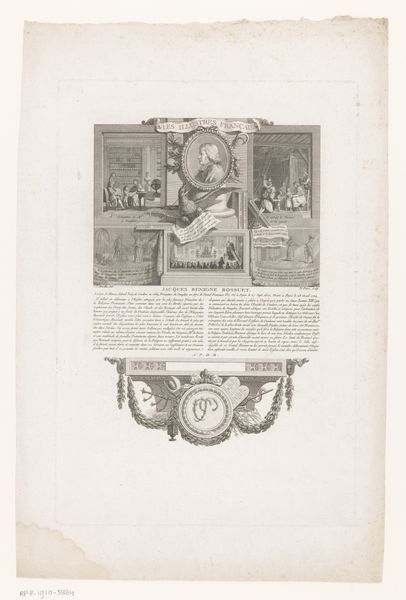
print, engraving
#
portrait
#
neoclacissism
#
ink paper printed
# print
#
old engraving style
#
history-painting
#
engraving
Dimensions: height 337 mm, width 230 mm
Copyright: Rijks Museum: Open Domain
Curator: Here we have "Allegorical Portrait of Voltaire," an engraving created between 1790 and 1816, attributed to Nicolas Ponce. It's currently housed here at the Rijksmuseum. Editor: My first impression? It’s overwhelmingly ornate. All those details seem etched with a precision demanding patience and control over the material, like it’s meant for mass consumption but speaks of meticulous skill. Curator: The work definitely evokes the Neoclassical period, embodying the style and the era’s values. Given the context of post-Revolutionary France, one can see a yearning for order and classical virtues. How do you view that layering of symbolism and historical messaging through its creation and materiality? Editor: It's about accessibility isn't it? Prints made art accessible, creating a market far beyond painted portraiture. Here, Voltaire is transformed from flesh to a reproducible image. It reduces him, a symbol of intellectual challenge to something commodifiable, domesticable. Curator: I agree. And in many ways, it's interesting how the mode of reproduction democratizes both image and concept of intellectual revolution but through its consumption. It underscores Voltaire's importance within that radical thinking, especially regarding religious tolerance and freedom of speech, ideas that remain hotly contested to this day. Editor: Exactly. Think of the process: the labor of engraving, the press churning out copies, the dissemination—it’s a network. It makes one wonder about the class implications embedded. The labor for whom? For what audience, for what purpose? Who really could afford those types of allegories? Curator: Well, it provokes further contemplation. The medium provides, on one hand, reproducibility—it allows this symbol, Voltaire and his beliefs to disseminate into public hands, to create discussion amongst those able to access it—a discussion for revolution of belief. What do you think our audience will come away with after seeing this piece? Editor: Hopefully, a consciousness about how art objects materialize beliefs, and simultaneously make or challenge hierarchies within the societal and intellectual life. Curator: Indeed. It invites consideration about the labor involved, not only by the artists and printers, but those who actively used these accessible pieces to debate the most important subjects of humanity.
Comments
No comments
Be the first to comment and join the conversation on the ultimate creative platform.
